Autumn Statement 2016
The Chancellor, Philip Hammond, delivered his Autumn Statement on 23 November. He reiterated the government’s promise to “build an economy that works for everyone” but what do the measures announced mean for your finances?
Income Tax
The 0% starting rate band for savings will remain at £5,000. Both the £100,000 threshold for phasing out the personal allowance and the £150,000 starting point for additional rate tax are unaltered for 2017/18. The result is that the overall tax burden is little changed for basic rate taxpayers, but most higher rate taxpayers will see a useful boost.
The Chancellor confirmed the goals of a personal allowance of £12,500 and higher rate threshold of £50,000 by 2020, but also announced that after 2020 the personal allowance increase would be linked to the Consumer Price Index (CPI) rather than the National Minimum Wage (NMW), as previously proposed. The NMW will itself rise by 30p an hour to £7.50 from April 2017.
Inheritance Tax
The Inheritance Tax (IHT) nil rate band, which has been frozen at £325,000 since April 2009, will remain unchanged until at least April 2021. The new residence nil rate band announced in the July 2015 Budget starts in 2017/18, but only at a level of £100,000 (it rises by £25,000 a year for each of the following three tax years before becoming inflation-linked).
Salary sacrifice
New rules will apply to salary sacrifice arrangements from 2017/18 which will largely negate the current Income Tax and National Insurance Contribution (NIC) advantages of such arrangements. There will be exemptions for arrangements relating to pensions (including advice), childcare, Cycle to Work and ultra-low emission cars.
Individual Savings Accounts (ISAs)
For 2017/18 the ISA investment limit will rise to £20,000, with the Junior ISA (JISA) and Child Trust Fund limits increasing to £4,128.
Pensions
Three important changes to pensions occurred on 6 April 2016:
• A further 20% reduction in the lifetime allowance from £1.25m to £1m, with the introduction of two new transitional reliefs;
• The tapering of the annual allowance to as little as £10,000 for those with high incomes; and
• The start of the new single tier state pension system, marking the end of the basic state pension and state second pension for anyone reaching their state pension age after 5 April 2016.
Mr Hammond also announced a reduction in the money purchase annual allowance (MPAA) from £10,000 to £4,000 for 2017/18 onwards. This measure is aimed at individuals drawing income under the pension flexibility rules and then recycling it as further tax-relieved pension contributions.
The latest cuts to the annual allowance and lifetime allowance mean that as the tax year end nears, reviewing pension contributions should be one of your priorities.
The housing market
While there were no new measures directly aimed at landlords, the move to bring in legislation banning letting agents from charging fees to tenants is likely to have an indirect effect.
Business Taxes
The main rate of Corporation tax will fall to 19% from April 2017 and the Chancellor confirmed the goal of a 17% rate by 2020.
If you’d like more of the headlines behind the Autumn Statement and what they mean for you, please talk to us.

